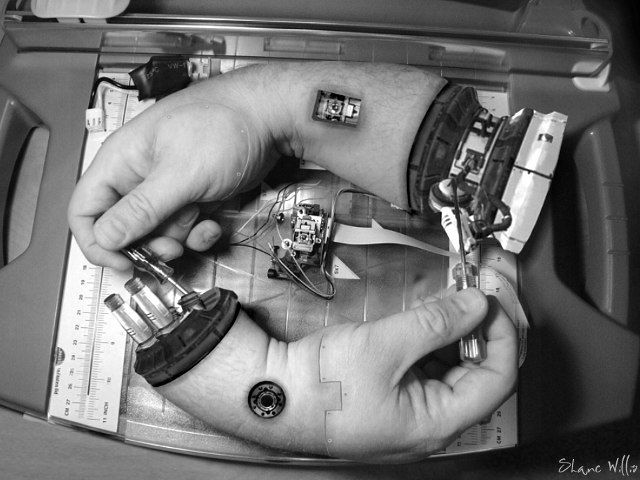This afternoon I’m going to attend the session about web services and another one about coordination and negotiation.
Session 3. Agents and Web Services
The room is quite empty, only 10 people. The session begins with our paper Service Discovery an Composition in Multiagent Systems. It’s a review about the most common techniques and algorithms used for standard web services and agent-based solutions. A future works point had to be added, and that has been the first question: ok, a good revision, and now… what are you planning to do? :-) Well, to integrate in a model of service-oriented, agent-based, organisation-focused architecture for open systems. It sounds good but we have to begin working. Current solutions that use gateways, as WSIG or Agent2WS aren’t useful. We need a common language for agents and services to live together in the same platform. Both can provide services (agent services may be more complex) and agents will be responsible of dynamic service composition.
The room is getting crowd, we’re 25 people now and the second talk begins. There’s a problem with his computer, so the chair exchanges 2nd and 3rd talks: Towards a Modular Architecture of Argumentative Agents to Compose Services. A good approach that refers to services in general: not web services, but services provided by agents that form a virtual organisation. The classify the demands according to different dialog types (information-seek, negotiate…). I have to check it with the dialog classification that I used in the AIWS course. They propose three models
- individual decision making
- social decision making (reasoning about the negotiation process)
- social interaction (controls the execution of the agreements)
(I like it) An interesting idea: to use priorities among goals and decisions. A good paper but, at the end, the negotiation of the QoS parameters is done when they have a list of winners, that is, when they have identified the service. Can be this idea be used during the discovery of the service? That would allow to discard those services that never meet the user QoS parameters.
And, finally the last one: Agent-based Framework for Web Service Composition. Agggg! his using comic font… I’m not sure that could take it seriously ;-) Well, a CBR-based solution to compose web services is proposed, so they can use semantic information to match the services (syntactic distance).I can’t see the relationship with agents. Wait a moment, I have it. It’s because they use a distributed solution.
And that’s the end of the session, with 30 people in the room. An active session, with a lot of questions. If this is the rhythm of the EUMAS, it is going to be an interesting workshop.
Session 4. Coordination and Negotiation
After the coffee-break, the last session of the day. The first paper, Plan Coordination for Durative Tasks, is very similar to some things that I’ve written in my PhD. thesis. I have to read it carefully. Furthermore, Cees Witteveen is the coauthor and he has an invited talk tomorrow. I can’t miss it.
The second talk, Bilateral Agent Negotiation With Information-Seeking, defines a framework to argumentative negotiation to an specific resource allocation case. The agents have (i) beliefs, (ii) desires, (iii) actions, that can be external communications or internal–message processing–, (iv) messages, (v) commitments to beliefs, desires and dialogs, (vi) action rules–actions, preconditions, constraints and consequences–, (vii) an evaluation mechanism to determine agent’s intentions and (viii) preferences as priorities over actions. They use protocols for 2 types of dialogs: for information-seeking (query and response) and negotiation( offer, accept and reject). And the permissible messages, the turn taking and the order in the messages are defined for both. After the model is exposed, he shows how they can solve the resource allocation problem with this technique, but there’re some cases without a soloution (cycles or agents that not need anything) because the negotiation process is blocked by self-interested behaviours of the agent.
The third paper is Teamwork Coordination for Vehicle Routing Problem and tries to find the simplest global decision that produces the max. global utility. They solve it using statistical methods from IR (maximum entropy). Sometimes, the utility is obtained not by one action, but by a sequence of actions. Furthermore, some immediate good actions for an agent can be bad for the global final utility, so they have to be punished asap.
Another article about traffic conditions is Anticipatory Vehicle Routing Using Delegate Multiagent Systems, which tries to anticipate and avoid congestions. the road is modelled as a graph where the nodes are the road junctions. Each node has one infrastructure agent and each car a vehicle agent. Before the car arrives a node, the vehicle sends exploratory ants, which ask infrastructure agents for the estimated time for their part of the route. Hundreds of ants can be sent by different vehicles. Intention ants are sent to tentative book a route. The booking have to be refreshed continuously (booking decay). Interesting solution, but with a lot of problems. The most important one is the fairness: I can book every possible route, so the estimate traffic can be faked.
Blogged with Flock
Tags: eumas, congreso, web services, cbr, coordinacion, negociacion

